Michele Payn's Blog, page 16
June 8, 2017
Is an apple an apple? A farmer tells all.
Do farmers pour chemicals on our fruit? How do we know apples are safe? Why use any products in orchards? Are apples processed before we see them in the grocery store?
A dad to two cute little girls and husband to a cancer researcher, Michigan farmer Jeff VanderWerff is passionate about politics, the MSU Spartans and farmers doing the right thing. He took to the time to talk with me on camera, showing off his beautiful products and having a very frank discussion about why apples are grown they way they are and what is behind his family farm.
Did you know it cost apple growers thousands of dollars whenever it rains? Or that the trees can be destroyed by scab? In addition to explaining why he uses certain practices in growing apples, Jeff talked about the stringent standards and audits of fruit farmers in Food Truths from Farm to Table: 25 Ways to Shop & Eat Without Guilt (just named a #1 Amazon best-seller), He shares more about farming on Twitter and Facebook under the @AgSalesman handle.
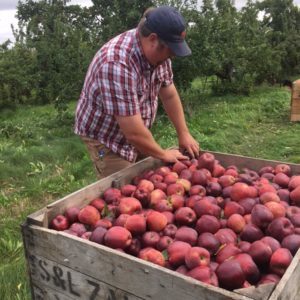 The top apple growing states are Washington, New York, and Michigan. Incidentally, the U.S. exports one in every four apples. Canada is a major trading partner; the U.S. exports apples north and Canada exports theirs south. The United States also imports fresh apples, mostly from the Southern Hemisphere, to keep grocery store shelves stocked from March to July. Approximately six percent of fresh apples consumed in the U.S. are imported, with the largest sources coming from Chile and New Zealand.
The top apple growing states are Washington, New York, and Michigan. Incidentally, the U.S. exports one in every four apples. Canada is a major trading partner; the U.S. exports apples north and Canada exports theirs south. The United States also imports fresh apples, mostly from the Southern Hemisphere, to keep grocery store shelves stocked from March to July. Approximately six percent of fresh apples consumed in the U.S. are imported, with the largest sources coming from Chile and New Zealand.
An apple may be an apple, but rest assured it is grown with care – and monitored more than you can imagine. The next time you grab a bag, consider farmers like Jeff and the intense system behind your apple. Enjoy and know it is safe!
March 29, 2017
Do you buy food on shaming or your own standards?
 “Who has time for this?” was what I heard from nearly every grocery buyer I talked with while researching Food Truths from Farm to Table.
“Who has time for this?” was what I heard from nearly every grocery buyer I talked with while researching Food Truths from Farm to Table.
“What if someone sees me and judges me because of what’s in my cart?” asked some.
“I feel like I need a science degree to buy food,” others commented.
So how is a mom or dad supposed to know if they’re doing the right thing for their family?
Confusion and emotionalism has have made food a battleground. The marketing is getting bigger. The misinformation grows. Activists continue to bully. Celebrities and politicians take opinion-based positions instead of looking at the facts. Food shaming persists. As a result of all of this, food buyers are filled with guilt and, confusion, and/or are overwhelmed.
I feel your pain. Unless I have a child along to try to teach them about making healthy choices, my grocery trips are known for speed—grab and go. Be done with it. Partially because I have the patience of a gnat, but mostly because I understand the system behind the food. I know the people raising food are doing it the right way for the right reasons. There are thousands of farmers just like those who have shared what they do throughout this book. I also believe USDA, FDA, and EPA protocols protect our food. I know the science involved and trust it.
But every issue addressed in Food Truths from Farm to Table hits me when I go to the grocery store. I can’t just grab a bag of potatoes, pick up a steak, or select cereal without thinking about the people and practices it took to produce that food. That’s when the misleading claims about farm families and today’s farming and ranching practices become personal.
What are your family’s ethical, health, environmental and social standards?
Stick to those and measure all food claims accordingly. The truth in food lies in the way it was produced, how you choose it, and the value it brings to your family.
That is ultimately YOUR decision, and you don’t need approval from an outside party. My hope is that this book has armed you with the truths so you, too, can ask better questions and adjust as necessary.
I also know people just want to feel good about their food choices. Hopefully this new book will arm you with truths about food so you can feel good that you are doing the right thing as you buy, enjoy, and serve food.
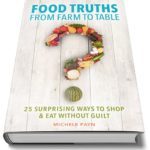 My mantra is to know the farmer, know the science, or know the system.
My mantra is to know the farmer, know the science, or know the system.
In other words, do you have firsthand perspective on how food is raised and why a farmer or rancher uses certain practices? Or, do you know the science behind the food claims to check that it’s common sense? Or, do you know the agricultural and food regulatory system well enough to trust it?
This blog is an excerpt from No More Food Fights: 25 Surprising Ways to Shop & Eat Without Guilt, a #1 new release on Amazon. Learn more here.
March 16, 2017
Why Food Truths? A look inside the book
“I just want to have food that is good for my family. Why does it have to be so difficult?”
This was the question I kept hearing from a group of moms gathered around a long kitchen table on a cold January day.
We talked about the agony of going to the grocery store. The guilt. The confusion.
“I don’t have enough time to be researching all of this information. I just want to feed my family food I can trust. How can food be less confusing?”
In between sharing stories of our kids over coffee and laughter, the questions continued for over two hours. It became apparent they just want to feel good about the food they feed their family.
“Why is finding the right food so confusing?” I asked them.
As Ellen, a mom with four kids under the age of 11, said, “I don’t know what to believe anymore. One year they tell us to avoid eggs, the next year we’re supposed to only eat meat on certain days of the week and last week fruits were villains. I just want to be able to have food for my family that I know is healthy for them.”
I understand that. Like you, I’m trying to do the best thing for my family, especially when it comes to nutrition and health.
When I was speaking for a group of dietitians two years ago, I heard over and over people are confused about their food – and a big part of that is not knowing how it is produced. “Where does our food come from? How can we trust it if we don’t know who is producing it and what they are doing?” asked a registered dietitian in the first year of her career.
I thought, “Isn’t it common sense that ranchers and farm families are growing the plants and animals to feed you?”
I have come to understand the people – and stories – of agriculture are common sense to me because I grew up in agriculture. My roots are firmly planted in the world where food is grown.
Two-thirds of the U.S. population is in cities. Many have never even visited a ranch or a farm. The majority of the Canadian and U.S. population is three to four generations removed from the farm. They have no idea how the food they eat each day is produced until someone tells them. Hence the confusion – and the opportunity to easily buy into misinformation.
The moms at the table told me “You really need to write a book about this. We want to know what you buy at the grocery, so make it a book we can take to the store with us so we can use it when we’re buying food.”
A red flag popped up in my brain. “Write another book? I’m busy enough already. Besides, there are so many books telling us what to eat or not eat. Who needs another book about food when people feel like they need a science degree and detective just to get through the grocery store?”
Then I realized “But there aren’t books out there from a rancher or farmer’s perspective that actually takes you behind the scenes of today’s agriculture in the U.S. and Canada. We need a book that lifts the curtain on the people growing food, how they do it – and why they are in farming and ranching”
Why this book?
Those were the thoughts going through my head as I considered writing this book. I have an abundantly “full life” between being a mom, running a business that requires a lot of travel, tending to cattle, volunteering, etc.
Yet I couldn’t stop thinking about what those women said, knowing they represented millions who want, need and deserve to feel good about the food they buy. In order that to happen, they deserve to know the truth from the people who are growing their food to understand and trust it.
It became too important of an issue for me to ignore. I’ve had a firsthand perspective of the families growing your food for 40 years.
So I wrote this book – not because I want to push my farm views on you. Not because I need my name on a cover. Not because I believe I have all of the answers.
I do offer a viewpoint contrarian to fashionable food; one to help you trust the intentions and process in farming and ranching.
I wrote this book because I care about honoring the truth. I care about choice – both on the plate AND on the farm. I care about parents not feeling guilty when they go to the grocery store and can’t afford the “right” label. I care about people not being judged because of what is on their plate or in their grocery bag. I care how instant experts are disparaging farmers and ranchers without knowing what they’re talking about. I care that time-crunched parents can buy food – regardless of the brand – with confidence it is safe. I care about children understanding marketing on their food and knowing the real truth in how food is raised. I care about getting back to the truth in food – raised the right way by the right people for the right reasons.
If taking the time to read this book helps you buy, prepare and enjoy food with confidence – my work-translating farm to food will be worth it. I hope you’ll keep it in your kitchen as a reference. If Food Truths from Farm to Table gives you permission to be smart about your food, my mission is accomplished.
After a lifetime as a farm girl and 15 years of working as a professional speaker to bring people together around the plate, I thought the confusion and emotional hysteria around food would die down. I hoped the activists manipulating food companies and consumer minds would move on. I expected journalists with no agricultural background would be called out for their one-sided writing. I assumed people would see through marketing claims being made on food labels. I figured facts would prevail over shoddy science.
I was wrong.
The confusion and emotional battleground continues. The marketing is getting bigger. The misinformation grows. Activists continue to bully. Celebrities and politicians take opinion-based positions instead of looking at the facts. As a result of all of this, food buyers are filled with guilt, confusion and overwhelm. And the people growing food are left to wonder what happened.
The food hysteria is not going away, it’s getting worse.
Let’s make this simple; food is a basic necessity. We eat to sustain life. Not to make a political statement. Not as a status symbol. Not because of a claim on a package. Food is sustenance. My hope is that this book returns us to that fundamental belief.
How is this book organized?
Food Truths from Farm to Table walks you through aisles of the grocery store, from eggs to cereals to the deli. I created these nine sections for practical purposes of creating a visual of your food shopping experience, then wrote chapters around the most significant issues found in my research. 25 food truths are embedded throughout the book. These food truths are a result of the questions I’ve fielded from a variety of audiences – and know people need answered about their food. The 25 truths are also what I believe are at the heart of the divide between food and farm.
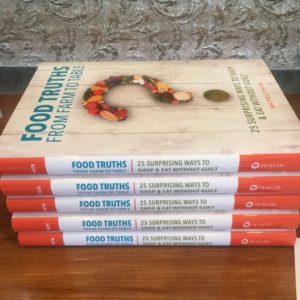 This book brings a voice of reason to the overly sensationalized food and health arena. My hope is that food truths from the people producing your food are a valuable and unique perspective. I want to arm you with the truths about food to simplify your food buying experience. My goal is to provide practical evidence in an emotional arena often filled with knee jerk reactions. You may not agree with everything I write – and that’s O.K., I welcome debate.
This book brings a voice of reason to the overly sensationalized food and health arena. My hope is that food truths from the people producing your food are a valuable and unique perspective. I want to arm you with the truths about food to simplify your food buying experience. My goal is to provide practical evidence in an emotional arena often filled with knee jerk reactions. You may not agree with everything I write – and that’s O.K., I welcome debate.
This book will give you a different window into the food world to simplify your food shopping, reduce your guilt, and give you freedom to enjoy food. A window of what’s really happening on farms and ranches – one that leads you to think about food truths whenever you eat or buy food.
This blog is an excerpt from No More Food Fights: 25 Surprising Ways to Shop & Eat Without Guilt, which will be released on March 20, 2017.
March 1, 2017
Drones in high tech food production
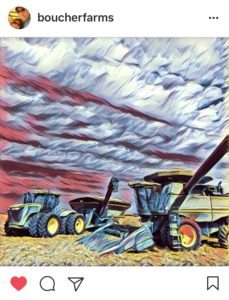
Created by Boucher Farms on Instagram
Drones flying over fields? Technology in food production? UAV cameras monitoring crops? All of these are reality on Matt Boucher’s farm in Illinois. This corn and soybean grower talks about how he uses technology in food production and why it helps him be a better steward of the land.
Check out what he had to say on camera with Michele.
Matt also covers how corn, soybeans, and wheat is traded on the market every day – in response to being asked if he is being paid to grow commodities. You can see our Facebook Live interview here for a more extensive look at why he uses technology on his farm.
In addition to explaining how drones help him take better care of crops, Matt talked about his choice to grow GMO and non-GMO crops in Food Truths from Farm to Table: 25 Ways to Shop & Eat Without Guilt. He shares more about farming, drones and technology used across food production on Instagram, Twitter and Facebook under @BoucherFarms handle.
Technology in food production benefits to the environment, keeps your food prices lower, and helps farmers have more time with their families. Before you fear high tech farming, get the facts from farmers like Matt.
February 23, 2017
Bacon bullies explained by Minnesota hog farmer
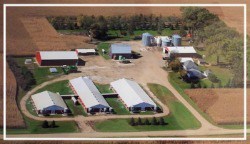 Did you know hogs establish a hierarchy? Or that keeping farm animals in barns protect them from disease, predators and weather extremes? Wanda Patsche, a hog farmer in Minnesota, sat down with Michele to talk pigs. Watch their video to learn more about animal welfare, bacon bullies and why hog farmers do what they do.
Did you know hogs establish a hierarchy? Or that keeping farm animals in barns protect them from disease, predators and weather extremes? Wanda Patsche, a hog farmer in Minnesota, sat down with Michele to talk pigs. Watch their video to learn more about animal welfare, bacon bullies and why hog farmers do what they do.
Wanda, a grandma to six, mom of three and a swine farmer with her husband Chuck in the rolling hills of southern Minnesota, sums up pig temperaments. “I wish people could experience the things we experience. I wish they could see the fights sows have which are a natural response to their innate social hierarchy that determines who is the “king” sow.”
I asked her “What happens while the sows determine their hierarchy?”
“They fight until they injure each other. They bite body parts including ears, snouts, and legs. And sometimes these injuries are lethal. I wish people could hear the ear piercing screams we hear when a sow is attacking another. No, we don’t rush to grab our phones to videotape the pig attacks. Instead, we attempt to break up the fights, assess and care for the injuries, all while hoping not to be injured ourselves.”
Context matters in animal care. It’s not always pretty, as animals can injure each other and people working to care for them. Wanda, once a city girl, did a great job providing perspective in Food Truths from Farm to Table: 25 Ways to Shop & Eat Without Guilt. You can also see our Facebook Live interview here for a more extensive look at how bacon is raised. Wanda shares more of her farm life on her blog, Minnesota Farm Living, and is on Twitter as @MinnFarmer.
Most of us are overwhelmed by animal welfare claims in the meat case. Get the context of animals care from farmers and ranchers working with the animals.
January 25, 2017
How can farmers connect with dietitians?
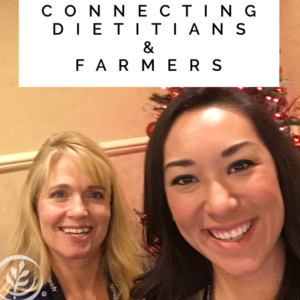
Michele talks on camera with Registered Dietitian Cara Harbstreet about connecting food production & nutrition.
What does a dietitian do? Why should farmers be concerned about connecting with the dietetic community? How can we bring the world of food production and RDs together?
It was great fun to sit down with Cara Harbstreet, known as @StreetSmartRD, last month to chat about the intersection of farm and food. As a Registered Dietitian, she prioritizes science and facts in nutrition to guide her clients. Given the obesity epidemic across North America, dietitians have a critical role in the conversation around food and nutrition – and a group I enjoy speaking to regularly to help provide truth from the farm.
Watch Cara talk about the power of connecting on human values first and ways farmers can share farming and ranching with dietitians. You might be surprised how simple it is!
You can see more of our conversation on this Facebook Live video, shot at the AgChat Foundation’s Cultivate & Connect Conference. Be sure to visit Cara’s Street Smart Nutrition blog, where she focuses on wellness and working towards balance. The way food is raised is a critical part of that – as is building bridges between the people growing food and those making nutrition recommendations. How can you connect across the food plate?



